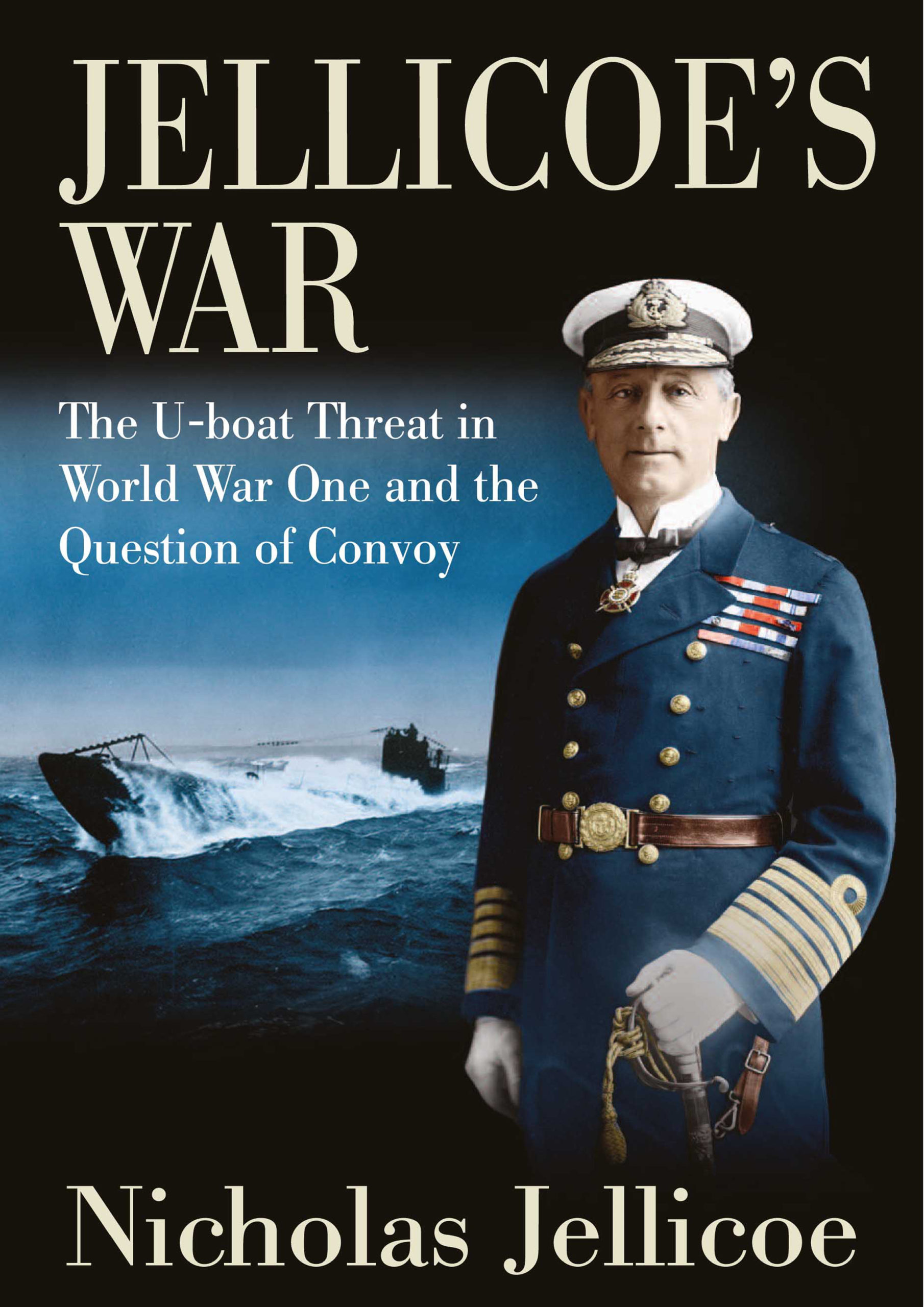Jellicoe's War
THE U-BOAT THREAT IN WORLD WAR ONE AND THE QUESTION OF CONVOY
Published 2024
Maybe as important as Jutland itself, the war against the German U-boats turned a critical corner in 1917. From near defeat in April, by the end of 1917 convoy had been introduced and the key foundations for successful ASW laid by Jellicoe before before sacked by Lloyd George on Christmas Eve 1917.
In February 1917, German U-boats launched a savage unrestricted campaign against both Allied and neutral shipping. At its peak in April, 860,000 tons of Allied merchant shipping was sunk. Britain’s supremacy at sea was being severely challenged and with it the chances of victory in the wider war. Taking up the challenge was Britain’s new First Sea Lord, Sir John Jellicoe, until the previous December C-in-C of the Grand Fleet – famously described by Churchill as the only man who could have lost the war in an afternoon. The battle he now faced was equally critical, although the timeline of defeat was a matter of months rather than hours – Britain’s food stocks were dangerously low with wheat reserves down to six weeks and sugar to only two, while wide-scale shortages were crippling the industrial economy. Jellicoe outlined the gravity of the situation with total candor to Rear Admiral William Sims, USN, sent over before America officially declared war by Franklin Roosevelt, the Assistant Secretary of the Navy. The two men already knew each other from service together in China during the Boxer Rebellion, so Jellicoe’s plea for urgent American assistance was taken seriously by Sims. After the USA joined the war in April 1917, together they lobbied Washington for aid, addressing their needs directly to two reluctant Anglophobes at the head of the USN, Secretary of the Navy, Josephus Daniels and Chief of Naval Operations, William Benson. Clearly, a radical new approach to anti-submarine warfare was called for, and Convoy was the leading contender. There were many objections to protecting shipping in this way, some ideological but most practical – a workable system, for example, effectively required state control of both shipping and distribution networks, something inconceivable in normal circumstances. However, Convoy had powerful advocates, including the Prime Minister, Lloyd George, who later claimed he had personally forced its adoption on a reluctant Admiralty. This self-serving political myth cast Jellicoe as an opponent of Convoy: nothing could be further from the truth. As both Jellicoe and Sims understood, the key requirement was a rapid increase in the number of destroyers for escort duties. America provided them, the first arriving in Queenstown, Ireland on 4 May and by June 46 were operating in European waters. This was the first step in an Anglo-American campaign that gradually brought the U-boat threat under control and led to its ultimate defeat. This book takes a fresh look at the undersea war as a whole and all the complex factors bearing on the campaign, only one of which was convoy. Its analysis is original, and its conclusions thought-provoking – an important contribution to the naval history of the Great War.
Reviews
Errata
-
p.xxviii. The reference to U-Deutschland’s visit to Baltmore in July should, of course, be listed under 1916 events not those of 1917.
